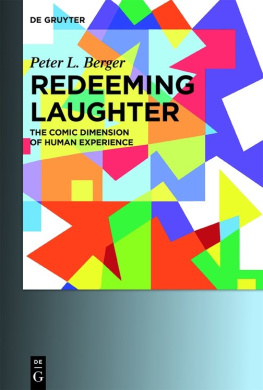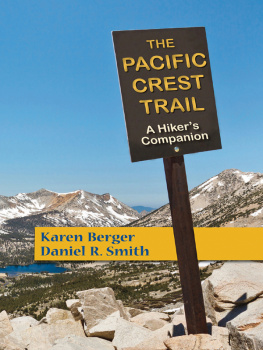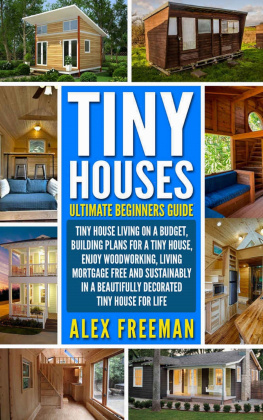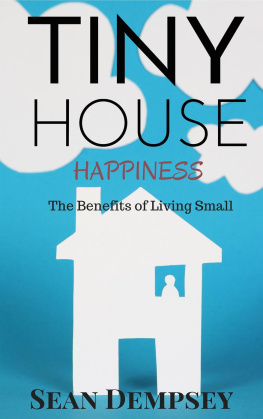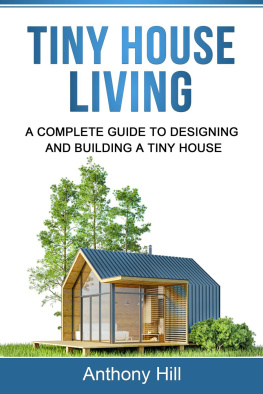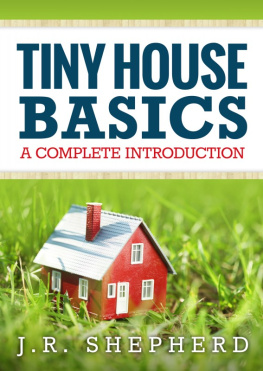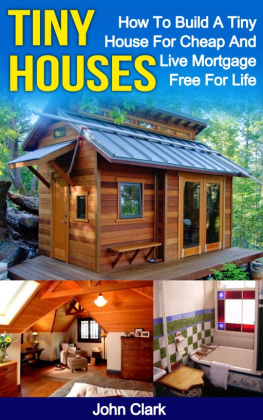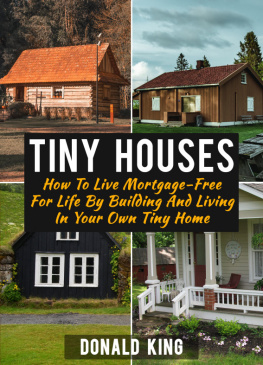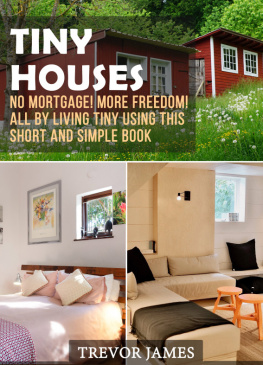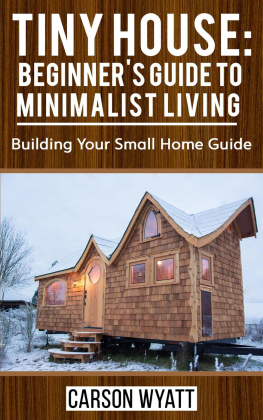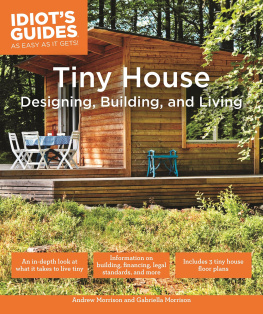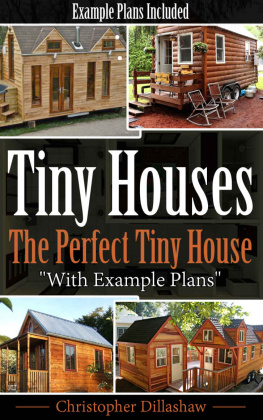Tiny Living
Effective Tips and Techniques of Designing, Building and Living in Tiny Houses
Copyright 2020 - All rights reserved.
The contents of this book may not be reproduced, duplicated or transmitted without direct written permission from the author.
Under no circumstances will any legal responsibility or blame be held against the publisher for any reparation, damages, or monetary loss due to the information herein, either directly or indirectly.
Legal Notice:
You cannot amend, distribute, sell, use, quote or paraphrase any part or the content within this book without the consent of the author.
Disclaimer Notice:
Please note the information contained within this document is for educational and entertainment purposes only. No warranties of any kind are expressed or implied. Readers acknowledge that the author is not engaging in the rendering of legal, financial, medical or professional advice. Please consult a licensed professional before attempting any techniques outlined in this book.
By reading this document, the reader agrees that under no circumstances are is the author responsible for any losses, direct or indirect, which are incurred as a result of the use of information contained within this document, including, but not limited to, errors, omissions, or inaccuracies.
Table of Contents
Introduction
Owning a home is one of the biggest dreams many people have. After years of living under someone else's care in their own house or years of renting out a place that belongs to somebody else, it is only natural to start thinking of having space that you can truly call yours, a space in which you can put down your roots. Finally, getting one is a significant moment, but it is not the easiest thing to achieve. It involves a lot of responsibility.
You might find it challenging to decide whether to build one from scratch or to buy one that's already built. It involves making important financial decisions that will inevitably affect your lifestyle for a long time. As such, it is very important to listen to as much advice as possible and conduct a lot of research before you make a decision.
That said, getting the financial ability to own a home, big or tiny, might take some years, and you might have to start by renting a space as you save up and plan for that big step in your life.
Whether you are renting out a house or are thinking of building one, tiny living is a good option to start with. In this book, we will be shedding light on tiny living. In it, we discuss the effective tips and techniques of designing, building, and living in tiny houses.
Chapter 1: The Origin and Idea of Tiny Living
What is Tiny Living?
Tiny living refers to living in tiny houses. It's about living simply in a small beautiful space but with everything you need. You can actually live big in a tiny house because these small houses provide an opportunity for you to be free from debt. With this, you will be able to live a bigger and better life because of the opportunity of economic freedom compared to having a bigger house.
A house is considered tiny if it is between 85 and 400 square feet. It can be either stationary or mobile and are ideal, especially for couples who want to live a minimalist life.
Living in a tiny house involves a conscious choice to be content with a simpler life with an even smaller impact on the environment. The design and building process of a tiny house involves a lot of creativity and innovative technology to make full use of a small space.
Origin of Tiny Houses
Tiny houses might have only started gaining popularity in recent times, but they have been around for a very long time. Settlers in the very early days started the concept, and these houses emerged from igloos, huts, wigwams, and tents. The earliest groups to own tiny houses were the Inuits, Sioux, and Samoans.
A thousand years before Christ (BC), people established Gers as small homes that were more practical in Mongolia. Later, in 500 BC, small portable houses were built by Native Americans. These were both waterproof and heat resistant. When the 1800s came, Shot Gun Houses emerged inspired by the Haitians in the South.
When the 1970s came, Allan Wexler, an artist, pursued the possibility of living in a smaller than usual space, one that was compact, which assisted him in the promotion of his art. In 1973, two authors Bob Easton and Lloyd Kahn, released a book entitled Shelter that advanced this idea and spread it further to more people. The concept of tiny living space was later advocated by more authors, for example, Lester Walker and Henry David.
In the '90s, Andrea Zittel, another artist, also used this concept in her artwork and inspired the tiny house trend again. We can say that the most recent tiny house movement that we see around us started in 1997. First, there was Sarah Susank, an author that went ahead to publish a book entitled "The Not So Big House," emphasizing how beneficial a small house can be to the environment. This brought about a tiny house crusade.
There was also John Shafer, who in 1997 built his very own tiny house on wheels. After some years, John started a company called the Tumbleweed Tiny House that provides different plans when it comes to building a tiny house and information on other aspects of tiny homes. Through this, he showed people that they could either give away or sell some of their belongings, either unnecessary ones or the unwanted and move into smaller living spaces. These tiny living spaces are eco-friendly and less expensive than regular houses but still provide a lot of different options for the owners' futures. John Shafer later created another company named Four Lights Tiny House, which further propelled the idea of tiny house living.
The tiny homes trend continued to rise, and over the years, different TV shows and movies have promoted it further. An example includes "The Little House on The Prairie," a show that was a great hit. Henry David Thoreau and Marie Antoinette also built tiny historical homes, and every year, people are given tours as a way of inspiring them to adopt that kind of lifestyle.
As you can see, the tiny house movement came about because of the need to adopt a simple and environmentally friendly kind of life. It limits the impact on your wallet as well. Tiny houses create less waste and require very little energy.
What are Some Characteristics of a Tiny House?
You may be wondering what makes a living space qualify to be a tiny house. Well, here are a few characteristics:
1. Creative Storage Designs and Solutions
As the name suggests, a tiny house has limited space. It is usually characterized by solutions such as drawers that are collapsible or hidden ones. It also involves finding more ways of storing your items, for example, hanging them neatly, or storing them in decorative trunks.
It is advisable to consult widely with your builders when coming up with storage spaces inside your tiny house so that you make good use of the available space in the most creative way.
2. Multipurpose Rooms or Areas
Unlike a big house, a small one does not have many rooms and should, therefore, be very flexible. This means some of the rooms will have more than one or two uses. For example, you may have to use your kitchen as a dining area and as a working space. A bedroom could be a play area for the kids as well as an office.
As such, you should pay more attention to the kind of furniture or utensils you put in these rooms. They should reflect the different uses of the room. For example, you could buy a nice table for dining that could be used for doing office work too. It could then be removed to make a lounge area or dropped down to make a bed.






